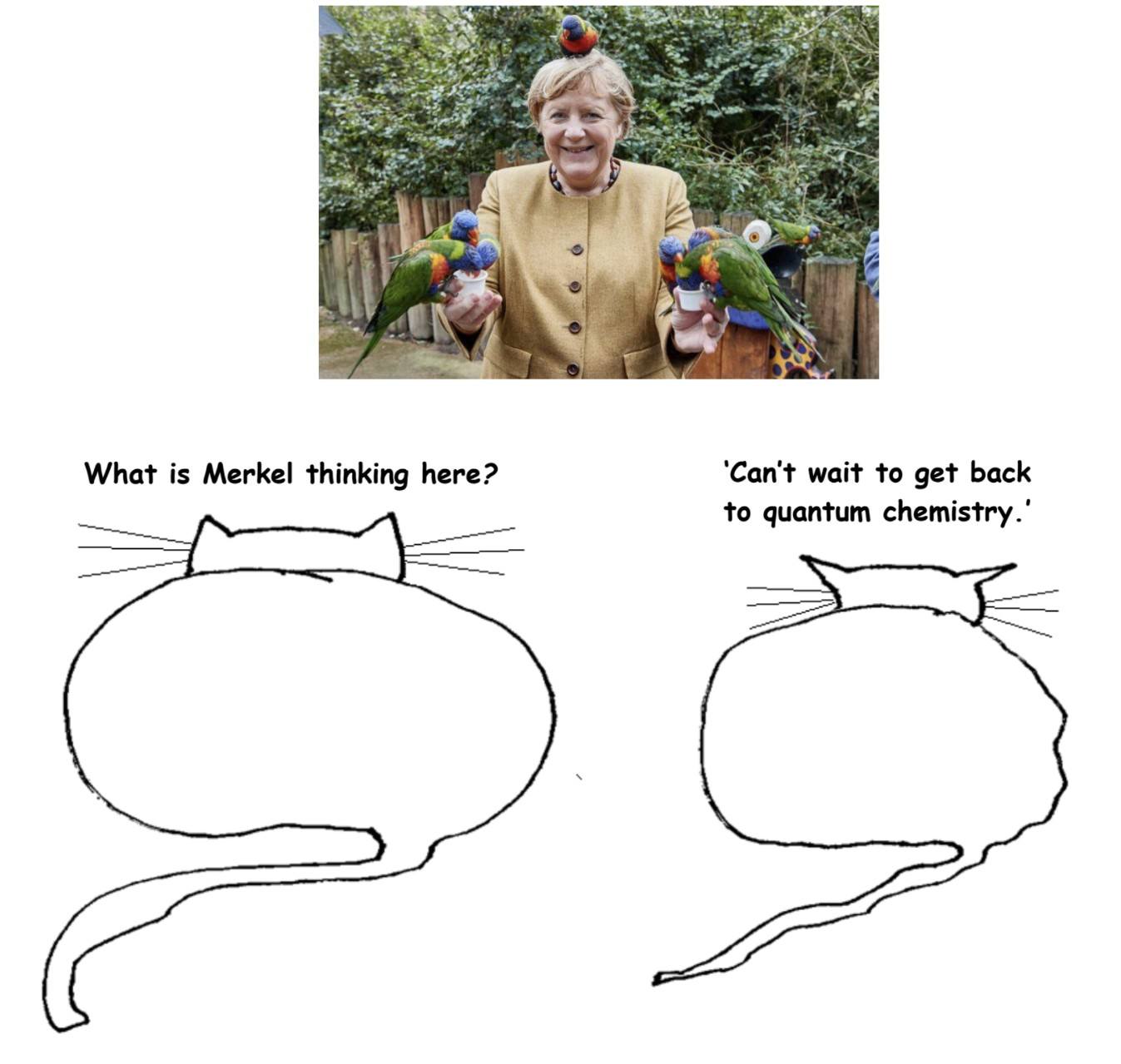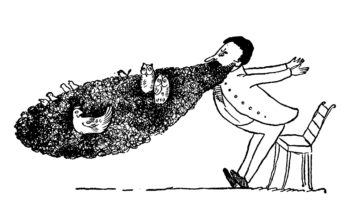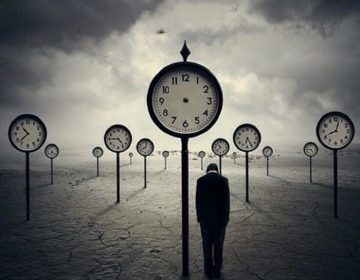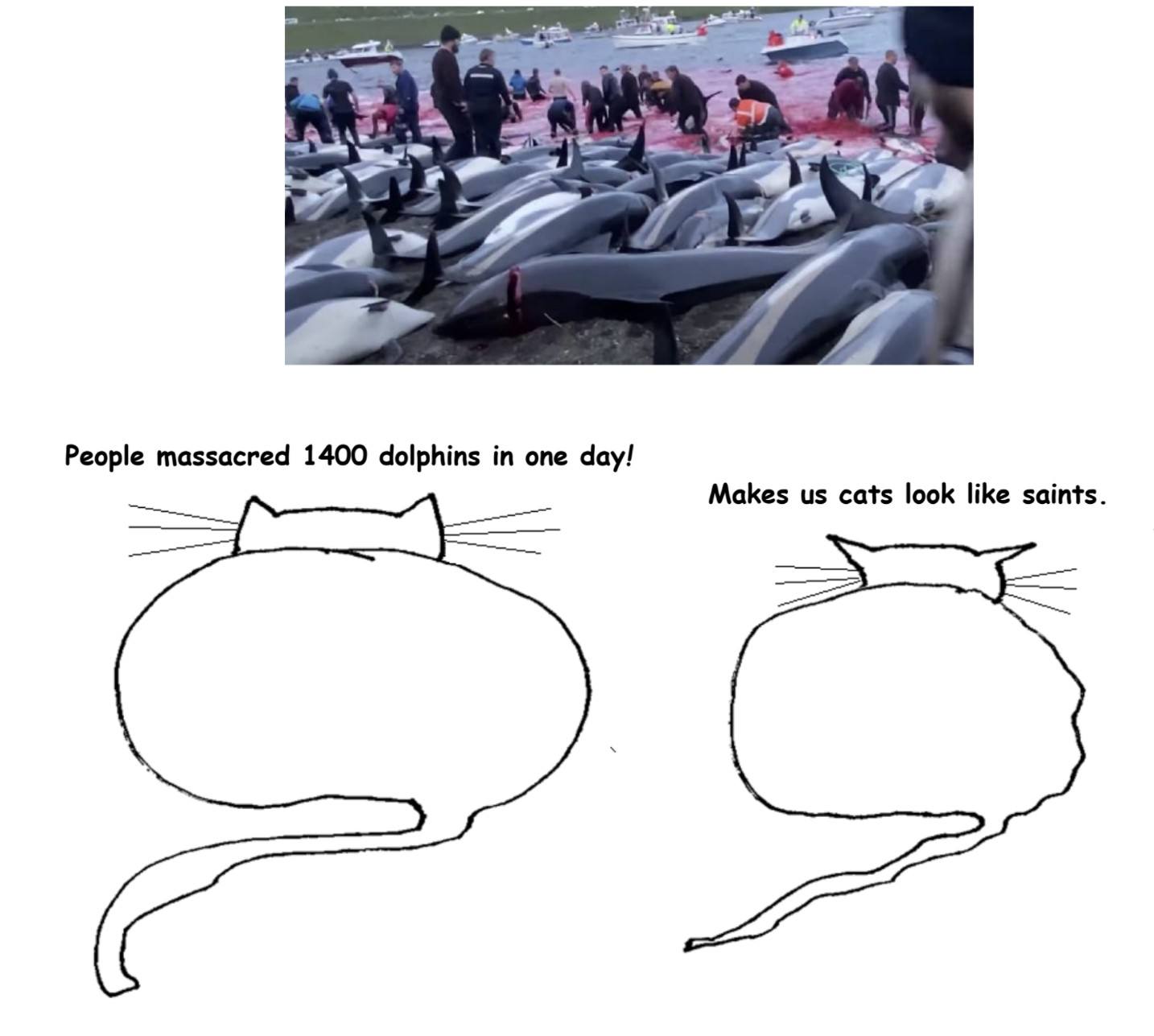 Robert Dash. Flower Bud of the Arbequina Olive Tree (black olives).
Robert Dash. Flower Bud of the Arbequina Olive Tree (black olives).
Microphotography, from National Geographic.
 Robert Dash. Flower Bud of the Arbequina Olive Tree (black olives).
Robert Dash. Flower Bud of the Arbequina Olive Tree (black olives).
Microphotography, from National Geographic.
by Nicola Sayers
 What is it to be twenty? Forty? Sixty? Eighty? These points that mark the four quarters of a life — fifths if you’re lucky, larger portions if you’re not.
What is it to be twenty? Forty? Sixty? Eighty? These points that mark the four quarters of a life — fifths if you’re lucky, larger portions if you’re not.
*
We read the book together, my mother and I. The book, a work of autofiction, is Siri Hustvedt’s Memories of the Future, and it tells the story of a twenty-three year old (S.H.) arriving in New York in 1978, and of the same woman in 2016, aged sixty-one, as she discovers her old journals from that earlier time. As we read, I am forty and my mother over seventy, although how much over I cannot say. I have learnt that there are those who treat you differently when they know your age, regardless of your health or vitality. That age is a signifier that in the end betrays you.
*
‘Then’ and ‘now’. Hustvedt draws attention to these words, these perspectives, again and again as she sets her reader up. Her central concern is with how a person changes between then and now; her central question, what remains of that girl?
*
The young S.H. could be any young, reflective woman setting out to soak up what the world has to offer. I admit to feeling a particular affinity with Hustvedt: Scandinavian roots, Jewish husband, PhD in literature before focussing on her own writing. But her story is in truth an archetypal one. She could be Felicity from the eponymous 90s TV-drama, going to New York in search of her crush Ben and of herself; or Jo from Little Women, heading off with pen and persistence to discover, write and right the world.
And so, I arrive in the city I have seen in films and have read about in books, which is New York City but also other cities, Paris and London and St. Petersburg, the city of the hero’s fortunes and misfortunes, a real city that is also an imaginary city.
I am reminded by Hustvedt’s prose of Joan Didion’s famous essay ‘Goodbye to all That’ about her experiences as a young person in New York, and about leaving it all behind. For both Hustvedt and Didion the defining experience of youth is of life as a field of possibility: Who will you meet? What will you do? Who will you love? What will you be? Read more »
by Mary Hrovat
 1. The public library is holding a book or DVD for me.
1. The public library is holding a book or DVD for me.
2. I’m going to see my older son and his family.
3. It’s dusk, and I love to walk in the twilight.
4. It’s late in the evening, a few days before Christmas 2019, and my younger son has just arrived from out of town. He’d like to drop off his rental car, and I decide to go with him to the rental lot so we can walk back to my house together. We stride through the chilly hush of a college town on Christmas break, past colorful lights and down dark familiar streets, talking and laughing.
5. The dew point is below 60°F, and it’s not too hot. I might as well make the most of this break from the heat and get out for a bit.
6. The university library is holding a book for me.
7. I want to see the ginkgo trees in the park in all their autumn glory.
8. It’s been raining heavily all day, and it’s still coming down pretty hard. But I’m out of lettuce, and these library books won’t return themselves. Also, I’m curious about whether the creek running through campus has overrun its banks. (It has.) Read more »

by Charlie Huenemann

In discussion with Moritz Schlick and Friedrich Waisman in 1929, Ludwig Wittgenstein said he knew what Heidegger was getting at in his murky assertions about Dasein and Angst. The only problem, Wittgenstein thought, was that humans just cannot speak intelligibly about the highest or deepest things. Not even Heidegger.
“Think, for instance, of the astonishment that anything exists. This astonishment cannot be expressed in the form of a question, and there is also no answer to it. All that we can say can only, a priori, be nonsense. Nevertheless we run up against the boundaries of language. Kierkegaard also saw this running-up and similarly pointed it out (as running up against the paradox). This running up against the boundaries of language is Ethics. I hold it certainly to be very important that one makes an end to all the chatter about ethics – whether there can be knowledge in ethics, whether there are values, whether the Good can be defined, etc. In ethics one always makes the attempt to say something which cannot concern and never concerns the essence of the matter. It is a priori certain: whatever one may give as a definition of the Good – it is always only a misunderstanding to suppose that the expression corresponds to what one actually means (Moore). But the tendency to run up against shows something. The holy Augustine already knew this when he said: ‘What, you scoundrel, you would speak no nonsense? Go ahead and speak nonsense – it doesn’t matter.’”
In this discussion, Wittgenstein was still operating mostly in his Tractatus mode — the one in which he imperiously scolds anyone who fails to assert a meaningful proposition according to the Seven Canonical Assertions carved into his monolithic Tractatus Logico-Philosophicus. But we can sense in these remarks that a shift is taking place, as Wittgenstein is no doubt growing up and realizing that the main business of life is filled with nonsense. The meanings of our assertions, as he claimed later in the Philosophical Investigations, are inextricably tangled up with getting things done and living with others. A group of philosophers bound solely to the dictates of the Tractatus would be a sorry, feckless lot — like the logical positivists. Read more »
by Mark Harvey

It’s hard to know what the old west was really like as we’ve been so inundated with Hollywood films depicting the west as an eternal gunfight between good guys and bad guys, cowboys and Indians, and the unshaven versus the upstanding townsfolk. Westerns have had an outsized impact on our understanding of the times and just a few directors shaped our grasp of that history more than any books ever written. In fact, some of the most popular and influential western films were directed by an Italian named Sergio Leone who was born in Rome in 1929, about 6,000 miles from where the fight at the OK Corral took place. Leone directed A Fistful of Dollars (Per un pugno di dollari, in Italian), For a Few Dollars More, and The Good, the Bad and the Ugly. Leone’s films popularized “spaghetti westerns,” so named because so many were being produced in Italy where it was cheaper to make movies. By some sort of alignment of the stars, Leone happened to be a childhood classmate of the great composer Ennio Morricone, who wrote over 400 movie scores. Morricone wrote the scores for several of Leone’s films, including the Dollars trilogy, and his music with the haunting, menacing whistles and twangy guitar guided Clint Eastwood on his adventures of killing lots of bad guys with greasy faces and half-chewed cheroots. Read more »
by Thomas O’Dwyer

In the new Apple TV series, The Foundation, based on the novels of Isaac Asimov, two mathematicians, an old man and a young woman, wrestle with the concept of psychohistory and what it means for the future of the Imperial Galaxy. Psychohistory combines history, sociology, and mathematical models to predict the future behaviour of very large groups of people. The girl, Gaal Dornick, generates a holographic model designed by her mentor Hari Seldon. She sees a swarm of particles representing trillions of people forming patterns of growth and decay across thousands of millennia, predicting the looming collapse of civilisation. It seems the grand ideas of the classic science fiction writers are back among us after decades of wandering lost in the intellectual deserts of Hollywood, where the clash of alien cultures often became thin remakes of American cowboy and Injun battles of yore. The intelligent swarm of equations in Foundation immediately brought to mind the restless, mysterious, sentient ocean of the planet Solaris in the novel by the Polish author, Stanislaw Lem. The Polish parliament has officially declared 2021 to be Stanislaw Lem Year in honour of its native genius, 100 years after his birth. Read more »
I’ve been buying and trying out some new hot sauces recently, in this case with my lunch of khichri (red lentils and rice cooked together) and a chicken seekh kabab. Here are my brief ratings of these fiery condiments (from the left) on a scale of 1 to 5 stars:
by Mindy Clegg

It’s the beginning of fall and the Halloween season! As we’re still somewhat locked down (though we should be MORE locked down, if you ask me), why not a recommendation for a horror film that addresses some aspect of modern history? In this case, the Bosnian War. Humans have long loved to be scared. Mythologies from around the world include elements of horror, showing how it seems to be a universal aspect of storytelling as scholars who study folklore and mythology have shown, such as Emily Zarka of the PBS show Monstrum.
But why do we still embrace being scared for an hour and a half despite being fully modern subjects in a more “enlightened” era? Kath Bates argued that humans seek out these thrills because they are scares that we can control. Writer and artist Merrie Destefano gave a more comprehensive set of reasons for our modern embrace of the macabre including proving to ourselves that we can overcome our fears. I would add that horror stories can help us to come to terms with horrific events in the the past that seem to defy our understanding of civilization. Put differently, horror as a film genre can help make the horrific in human history accessible for those outside of particular experiences. One example is The Maus, a horror film set in the woods near Srebrenica. Read more »
After the Twin Towers fell, the media flagged the attack, 9/11, a forever label that is historically significant for yet another attack, an inside job premeditated by Dr Kissangel and his oxymorons to depose Senor Yen Day, a dreamer, who wished for his people, at the very least, a ruka to sleep in, a lunch of cazuela and pan amasado, a good education, plus vision hearing and dental.
“I’m a socialist, not a utopian,” Senor Yen Day said in his homeland shaped like an extra-long red chili hugging the Pacific. He sincerely believed his dream had a hot chance.
Dr Kissangel didn’t want the wasps buzzing in their manicured lawns from sea to sullied sea to learn that the dream dreamed by Senor Yen Day would work much better in the long run than the grind the wasps had been told was the most productive of all grinds in the world’s most powerful demoncrazy.
Dr. Kissangel gathered his most trusted oxzines, nine men and two women, in a dimly lit war room at a building shaped like a pentagon near the Potomac River. He stood on a pulpit in front of a backlit bright map of the world. Many oxzines lit their cigars, swiveling behind a serpentine-shaped veneered countertop that snaked from one end of the room to the other. Read more »
by Pranab Bardhan
All of the articles in this series can be found here.
 At age twenty-three, after a brief stint of teaching at Calcutta University, I, accompanied by Kalpana, proceeded to Britain on a Commonwealth Scholarship. The Scholars from different parts of India were asked to assemble in Delhi, from where we were to take the international flight. The only experience I had of an air flight before was when I flew from Kolkata to Guwahati, representing Calcutta University in an inter-University debating competition. That flight experience had not been good, as our propeller-driven Dakota plane had hit a supposed ‘air pocket’. So I had some unnecessary trepidation for the long Delhi-London flight.
At age twenty-three, after a brief stint of teaching at Calcutta University, I, accompanied by Kalpana, proceeded to Britain on a Commonwealth Scholarship. The Scholars from different parts of India were asked to assemble in Delhi, from where we were to take the international flight. The only experience I had of an air flight before was when I flew from Kolkata to Guwahati, representing Calcutta University in an inter-University debating competition. That flight experience had not been good, as our propeller-driven Dakota plane had hit a supposed ‘air pocket’. So I had some unnecessary trepidation for the long Delhi-London flight.
A few months before I went to Delhi Jagdish Bhagwati, already a star economist, had written an article in EW advocating the case for devaluation of the Indian rupee, to which I wrote a kind of counter, arguing for a more general policy. When Jagdish read it in EW, he enquired with Sachin Chaudhuri who I was. I got a message from Chaudhuri that as I was soon to be in Delhi, Jagdish wanted to see me there. In Delhi he (and his colleague and partner, Padma Desai) took me to Delhi School of Economics. This was a good opportunity for me to know Jagdish particularly as his expertise was in International Trade Theory, an area I was planning to specialize in, and Jagdish gave me appropriate encouragement. I also met there K.N.Raj (more on him later), the doyen of Indian economists at that time—many years later when Samuelson at MIT challenged me if I knew any low-caste Indian economist, after a frantic mental search Raj’s name came handy. Read more »
by Paul Braterman

We all know the story. Socrates has been told by the oracle that he is wisest of men, but he considers that he himself knows nothing. Puzzled, he takes to cross-examining his fellow Athenians about their beliefs, and time and again finds that they will not bear examination. As a result, he is indicted on trumped-up charges of impiety and corrupting the young. After a trial in which he eloquently defends his behaviour, he is condemned to death. A martyr to freedom of expression, and a shocking example of democracy suppressing dissent. Surely there is more to the story than that? Indeed there is.
I am not about to commit the folly of denying the greatness of Socrates. We still, twentyfour cenuries later, praise his methods of investigation. I myself have used an argument taken directly from one of Plato’s Socratic dialogues. The topic was practical ethics, Socrates’ speciality; and the technique used, questioning assumed certainties, his favourite tactic.
Here’s what happened. A few years ago, I was involved in a moderately successful campaign [1] to reduce the statutory role of the Churches in Scotland’s local authority education committees. The Church of Scotland attempted to justify its privileged position by pointing to its distinctive Christian ethos. In reply, I pointed out that to the extent that this ethos is generally shared, we do not need any Church to promote it, while to the extent that it is specific to Christianity, the Churches have no right to impose it on the rest of us.
My reasoning derives directly from Socrates, in The Euthyphro, where Socrates challenges Euthyphro to define pious behaviour. Read more »
by Raji Jayaraman
 The gender wage gap is a well-documented phenomenon. Many are familiar with the claim that women earn 80 cents on the dollar. A more precise statement would be something like, “In the U.S., according to 2019 CPS data, the ratio of women’s to men’s median earnings for full-time, year-round workers, aged 15 years and older, was 82 cents.” Of course, the precise number of cents to the dollar will vary depending on the year of observation; whether you’re looking at median or mean earnings; what your age cut offs are; and whether you’re including full- and part-time workers. But 80 cents to the dollar is memorable, and it’s not dramatically the mark for many wealthy countries in the Global North. According to Eurostat, the average gender earnings ratio across EU-27 countries is 86 cents; in Canada it is 87 cents. And it’s been stuck somewhere in the eighties for two decades now.
The gender wage gap is a well-documented phenomenon. Many are familiar with the claim that women earn 80 cents on the dollar. A more precise statement would be something like, “In the U.S., according to 2019 CPS data, the ratio of women’s to men’s median earnings for full-time, year-round workers, aged 15 years and older, was 82 cents.” Of course, the precise number of cents to the dollar will vary depending on the year of observation; whether you’re looking at median or mean earnings; what your age cut offs are; and whether you’re including full- and part-time workers. But 80 cents to the dollar is memorable, and it’s not dramatically the mark for many wealthy countries in the Global North. According to Eurostat, the average gender earnings ratio across EU-27 countries is 86 cents; in Canada it is 87 cents. And it’s been stuck somewhere in the eighties for two decades now.
All of this has led to a demand for “Equal pay for equal work,” which is something all reasonable people can rally behind. Governments have thrown considerable policy weight behind this idea for some time now. Equal pay for equal work is a founding principle of the EU. The United States Equal Pay Act prohibiting gender-based pay discrimination was introduced in 1963. Such legislation has been complemented by laws mandating pay transparency by requiring companies to publish data on their gender pay gap—the idea being that that pay secrecy perpetuates gender-based pay discrimination (for example, here and here, with some evidence that such legislation may have narrowed the gap a bit.)
As a woman in economics, I am painfully aware that there exists gender-based discrimination at work (feel my pain here and here). There is even evidence that the same person tends to get lower pay for the same job if he is a she. That’s unacceptable. Equal pay for equal work! The trouble is that most work is not equal. Work is deeply segregated along gender lines. The problem starts early on. Read more »
by N. Gabriel Martin

The centrally-controlled dimming windows on newer airliners are an attack on human dignity, an affront to liberty, an insult to the sublimity of flight, and a curse against the beauty of our planet.
Now let me tell you how I really feel. I’ll admit that there might be more important things happening in the world than my inability to look out this window beside me. I can’t think of any right now, though.
No, right now all I can think of are the Greenlandic fjords and glaciers that Air Canada and Boeing are robbing from me. That’s because seeing sights like these are among the great privileges that the modern world has brought into our lives. Or rather, that it used to.
A lot of the talk about air travel is on the deprecating side, and to an extent I understand that. Like any travel, flying is difficult, and it’s gotten more difficult over the past decades as security has increased and low-cost airlines have introduced policies that are intended to inconvenience us (knowing that enough of us will upgrade out of frustration).
But all of those are trifles when compared to the miracle of flight! It is a miracle that I get to soar thousands of feet in the air, without any special training and without having to pay all that much (thanks to those low-cost carriers), while travelling hundreds of miles an hour and while gazing down at the landscape and the clouds.
Flying has allowed me to gaze down at parts of the earth I would not have been able to experience—the Rub’ Al Khali desert, alpine villages, a high peak in the outer Hebrides that scraped through the cloud like outstretched talons. Read more »
by Jochen Szangolies

The Incoherence of the Philosophers (Tahâfut al-falâsifa) is an attempt by 11th century Sunni theologian and mystic al-Ghazâlî to refute the doctrines of philosophers such as Ibn Sina (often latinized Avicenna) or al-Fârâbî (Alpharabius), which he viewed as heretical for favoring Greek philosophy over the tenets of Islam. Al-Ghazâlî’s methodological principle was that in order to refute the assertions of the philosophers, one must first be well versed in their ideas; indeed, another work of his, Doctrines of the Philosophers (Maqāsid al-Falāsifa), gives a comprehensive survey of the Neoplatonic philosophy he sought to refute in the Incoherence.
The Incoherence, besides its other qualities, is noteworthy in that it is now regarded as a landmark work in philosophy itself. Ibn Rushd (Averroes), in response, penned the Incoherence of the Incoherence (Tahāfut al-Tahāfut), a turning point away from Neoplatonism to Aristotelianism.
In modern times, most allegations of ‘incoherence’ levied against philosophy come not from the direction of religion, but rather, from scientists’ allegations that their discipline has made philosophy redundant, supplanting it by a better set of tools to investigate the world. The perhaps most well-known example of this is Stephen Hawking’s infamous assertion that ‘philosophy is dead’, but similar sentiments are readily found. While the proponents of such allegations have not always shown shown al-Ghazâlî’s methodological scrupulousness in engaging with the body of thought they seek to refute, these are still weighty charges by some of the leading intellectuals of the day. Read more »
by Joseph Shieber

One of the pleasures of reading Amartya Sen’s new memoir, Home in the World, is stumbling upon little anecdotes that provide new perspectives on, or an opportunity for a deepening engagement with, major intellectual figures.
One such occasion for me was Sen’s discussion of the influence of the economist Piero Sraffa, one of Sen’s academic mentors at Cambridge in the 1950s, on the later thought of the philosopher Ludwig Wittgenstein.
That Sraffa was influential on Wittgenstein is undeniable. In his preface to the Philosophical Investigations, Wittgenstein describes the path that led him to repudiate his earlier philosophical positions, as elucidated in his first book, the Tractatus Logico-Philosophicus, and to arrive at the positions that he develops in the Philosophical Investigations. Wittgenstein notes that, “since beginning to occupy myself with philosophy again, sixteen years ago, I have been forced to recognize grave mistakes in what I wrote in that first book. I was helped to realize these mistakes—to a degree which I myself am hardly able to estimate—by the criticism which my ideas encountered from Frank Ramsey … . Even more than to this … criticism I am indebted to that which a teacher of this university, Mr. P. Sraffa, for many years unceasingly practised on my thoughts. I am indebted to this stimulus for the most consequential ideas of this book.” (Philosophical Investigations, viii)
Though Wittgenstein doesn’t elaborate on the nature of Sraffa’s contributions, Sen locates Sraffa’s influence on Wittgenstein in Sraffa’s insistence that Wittgenstein’s earlier reductionist theory of meaning (more specifically, the picture theory of meaning of the Tractatus) was inadequate to capture the complexities of human language use. Sraffa emphasized the complex social arrangements that sustained and gave meaning to language, social arrangements that Wittgenstein attempted to capture with his notion of “language games” in the Philosophical Investigations. Read more »
by Thomas R. Wells

Suppose that we could all be good for just one day. No one would be tempted away from doing the right thing and towards their own selfish interests or illicit urges. No one would be afraid of retribution. We would be free of all internal and external obstacles to being good. What would happen?
Some good things would happen and would last beyond one day. For example, dictatorships would collapse into rubble. If no one would do evil or allow evil to be done for just one day then the thugs would stay home (or join in) while the people took back their country.
Some other nice things might get done. People might take the day off work and spend it doing good deeds like picking up the garbage in their neighbourhood. This wouldn’t last since the effects of those deeds wouldn’t last (it is easier to dismantle something evil and build something good). But even in their own right these good deeds probably wouldn’t amount to very much. This is not only because there is only so much that can be done in one day, but also because most important things require cooperation and coordination to achieve. We wouldn’t know which of the many possible good things to try to do, in what order, or to what extent. Should we give our life savings to Oxfam? Should we go adopt a cat from the shelter? Should we volunteer to teach English to recent immigrants? Where should we start and when should we stop? Merely acting on the intention to be good is not enough to actually do much good. Read more »
by Brooks Riley

by Emrys Westacott
 1859 was not a bad year for publishing in Britain. Books that came out that year included Darwin’s On the Origin of Species, John Stuart Mill’s On Liberty, and George Eliot’s Adam Bede. The first installments of Dickens’ A Tale of Two Cities and Wilkie Collins’ The Woman in White also made their appearance. And Samuel Smiles published Self-Help.
1859 was not a bad year for publishing in Britain. Books that came out that year included Darwin’s On the Origin of Species, John Stuart Mill’s On Liberty, and George Eliot’s Adam Bede. The first installments of Dickens’ A Tale of Two Cities and Wilkie Collins’ The Woman in White also made their appearance. And Samuel Smiles published Self-Help.
The fiction in this list remains fairly popular. Mill’s essay is generally considered a foundational text of modern liberalism and is widely used in political science undergraduate courses. Few people other than serious historians of science read On the Origin of Species in its entirety, but its standing as one of the most important and influential works ever penned is unassailable. Self-Help, by contrast, is rarely read or referred to these day except by literary and cultural historians of the Victorian era. Yet in its day it was an immediate bestseller, was quickly translated into several languages, and established Smiles’ reputation, thereby enabling him to settle into the ranks of those who, by dint of their own efforts, had achieved success and security.
Self-help books have been around for a long time, of course. One of the purposes of Plato’s dialogues was to direct people towards living the good life for a human being. Epictetus’ Handbook offered the same promise from a Stoic perspective. Plutarch’s Lives, at least some of them, have long been taken to provide inspirational models. But in the modern era, few texts in this category have been as influential, at least in their day, as Self-Help. Perhaps its most important precursor was Ben Franklin’s Autobiography, which tells how its author rose from an impoverished nobody to a highly respected somebody, and was explicitly written to illustrate the process. Read more »